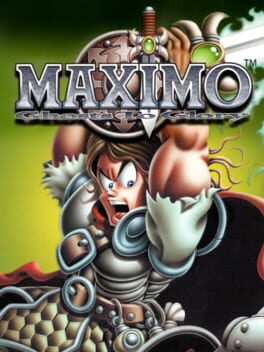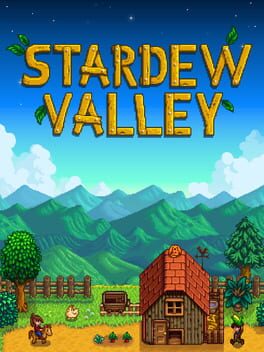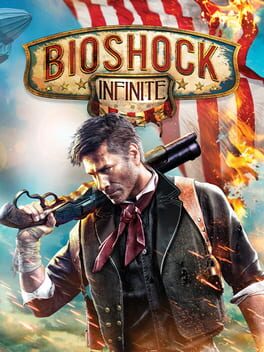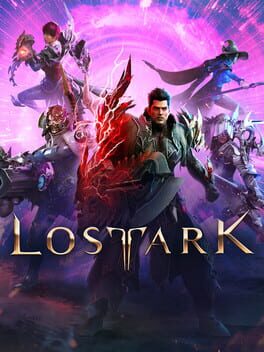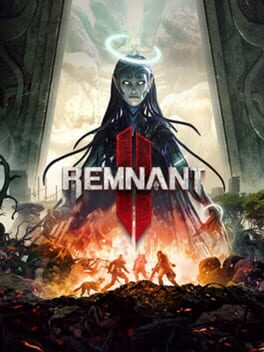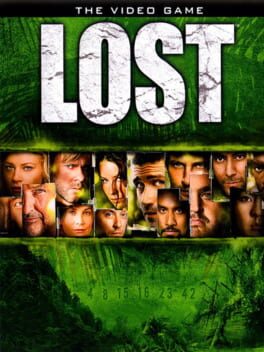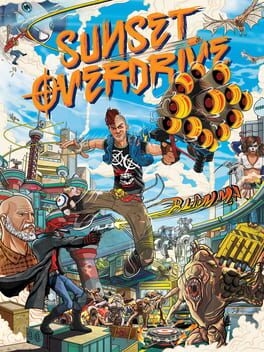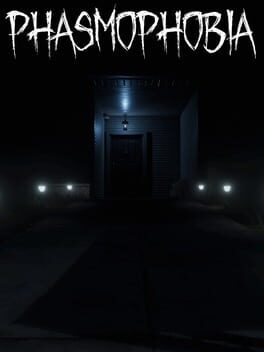Craigjs91
48 Reviews liked by Craigjs91
Forza Horizon 5
2021
I sincerely want to like the idea behind the game, and it does get some points from me for partially realizing that idea.
It is, at its heart, an arcade racing game, set in an unequivocally gorgeous setting, with an absolute metric ton of cars that can be customized to your heart's desire. The challenges are fun, and it offers great difficulty customization depending on your skill.
It looks and plays great. The problems lie in EVERYTHING else that this game is trying to be. It is NOT a good story game. It is NOT a fun story game. It is NOT a TDU-style life sim. It is NOT an edgy wacky racer game.
Each and every character in this game is so frustratingly boring, so annoying and pretentious, that I (at times) wished I could just take the heaviest car possible and drive all over them so that they would shut the fuck up. There's so many unskippable bullshit cutscenes at each and every story beat, where these pretentious corpo drones are spewing minutes upon minutes of garbage script, all heavily embellished with terrible jokes that still stink of last day's conversation by the office watercooler.
To make things worse, the cutscenes are mostly unskippable, so God save your soul if you wish to just relax and have a nice race somewhere - no no - you have to sit through this absolute garbage storyline that serves absolutely ZERO purpose just to race around the track for 3 laps.
It is, at its heart, an arcade racing game, set in an unequivocally gorgeous setting, with an absolute metric ton of cars that can be customized to your heart's desire. The challenges are fun, and it offers great difficulty customization depending on your skill.
It looks and plays great. The problems lie in EVERYTHING else that this game is trying to be. It is NOT a good story game. It is NOT a fun story game. It is NOT a TDU-style life sim. It is NOT an edgy wacky racer game.
Each and every character in this game is so frustratingly boring, so annoying and pretentious, that I (at times) wished I could just take the heaviest car possible and drive all over them so that they would shut the fuck up. There's so many unskippable bullshit cutscenes at each and every story beat, where these pretentious corpo drones are spewing minutes upon minutes of garbage script, all heavily embellished with terrible jokes that still stink of last day's conversation by the office watercooler.
To make things worse, the cutscenes are mostly unskippable, so God save your soul if you wish to just relax and have a nice race somewhere - no no - you have to sit through this absolute garbage storyline that serves absolutely ZERO purpose just to race around the track for 3 laps.
Afterparty
2019
Funny, until it's not. Intriguing, until it's not. Meaningful way to spend one’s living time, until it's not.
What a disappointment. A game about life and death and partying, it does have a few moments of poignancy, but it's mostly filled with empty blather.
It starts well enough, with a surprising and amusing introduction to its world, but it quickly becomes clear how little the writing really matters and how slowly any development happens, with the main action being leading your twin leads around chasing social macguffins. When around the middle of the game I finally met the devil and he told me that I have to visit two more people before I can challenge him, I groaned at the meaningless stretching of its playtime. Not to mention the long silent runs with occasionally repeating dialogue or sending you from island to island for no good reason or revisiting islands that you've already been to but have nothing visually new to offer while you silently run across through the same boring area, wasting more time whenever you take another wrong turn.
In short, the game doesn't seem to have much respect for its player’s time; or itself really, with its many “meta” jokes about limited player interactivity and barebones world-building and whatnot - it really isn’t that cute to call something you made bad when it really is lacking in what you're making fun of, and I wish creators understood that and instead of trying to be funny, laden with heavy “hi us kids” energy, they would just concentrate on their strong suits instead of mocking the player for even playing their game.
Which is all to say that it's a shame. I would have gladly finished the game on my own, but I just couldn't get myself to boot it up again and so just finished the second half of the game on YouTube. Reading the comments, I wasn't the only one.
And having now finished watching it, I'm not sure whether even that was worth it. There are still some entertaining moments, even some intriguing happenings, and I quite liked where the story of Satan's siblings headed ultimately, but I'm also glad I didn't have to play to get there myself and that really doesn't bode well for something trying to be a “game”.
So much for being excited for Oxenfree 2 ...
What a disappointment. A game about life and death and partying, it does have a few moments of poignancy, but it's mostly filled with empty blather.
It starts well enough, with a surprising and amusing introduction to its world, but it quickly becomes clear how little the writing really matters and how slowly any development happens, with the main action being leading your twin leads around chasing social macguffins. When around the middle of the game I finally met the devil and he told me that I have to visit two more people before I can challenge him, I groaned at the meaningless stretching of its playtime. Not to mention the long silent runs with occasionally repeating dialogue or sending you from island to island for no good reason or revisiting islands that you've already been to but have nothing visually new to offer while you silently run across through the same boring area, wasting more time whenever you take another wrong turn.
In short, the game doesn't seem to have much respect for its player’s time; or itself really, with its many “meta” jokes about limited player interactivity and barebones world-building and whatnot - it really isn’t that cute to call something you made bad when it really is lacking in what you're making fun of, and I wish creators understood that and instead of trying to be funny, laden with heavy “hi us kids” energy, they would just concentrate on their strong suits instead of mocking the player for even playing their game.
Which is all to say that it's a shame. I would have gladly finished the game on my own, but I just couldn't get myself to boot it up again and so just finished the second half of the game on YouTube. Reading the comments, I wasn't the only one.
And having now finished watching it, I'm not sure whether even that was worth it. There are still some entertaining moments, even some intriguing happenings, and I quite liked where the story of Satan's siblings headed ultimately, but I'm also glad I didn't have to play to get there myself and that really doesn't bode well for something trying to be a “game”.
So much for being excited for Oxenfree 2 ...
Whenever Maximo swings his sword, it can either rebound off of hard surfaces or get stuck in wooden ones as he has to take a second to wiggle it out again. It begs the question: why’s this niche 3D platformer from when the PS2 was still new, about a cartoon Roman fighting the skeletons from Army of Darkness, making me think more about when and where I swing a sword than most games wholly predicated on smacking things with a sword released in the decades since?
This emphasis on positioning’s essential to what makes Maximo such a great translation of Ghosts ‘n’ Goblins into 3D. As early on as its second set of levels, which introduces barriers of thorny vines you can only safely cut down from a certain range, it becomes apparent that the difference between life and death’s often something as seemingly negligible as knowing that Maximo remains stationary if you slash once but takes a step forward if you slash twice. Even small interactions like that distinguish themselves from equivalent moments in other platformers because you can’t rely on your depth perception as much, given that Maximo’s camera is at a Dutch angle, sprinkling in perpetual spatial discomfort just in case the trademark difficulty inherited from its sister series wasn’t already giving you the business. It sounds dissimilar to how slight inclines or dips in the road often spell doom for Arthur, as does stuff like luring enemies out into open areas to minimise the risk of Maximo’s sword getting caught on something, but these things are really just a different execution of the same key principles – making virtually every second of getting from point A to B an exercise in problem-solving and demanding an intimate level of familiarity with your character.
To go along with its extra dimension, Maximo adds an extra layer of decision-making to the above in the form of its randomised ability system. It’s drowning in bonus moves you can obtain as random drops from defeated enemies or chests, which range from making your ground pound’s shockwaves do damage or unveil hidden treasure to turning your shield throw into a lingering hazard by holding down the button and transforming into an invincible skeleton who dishes out OHKO contact damage, among enough others that I was still finding new ones in the final levels. There are two catches to this, though, the first of which being that you can only have up to 12 abilities at a time. It seems more likely that this limitation was created intentionally rather than a result of technological restrictions, given that it might detract from the difficulty if you’d access to them all at once and forcing the player to adapt through RNG elements is G‘n’G 101. Even if the latter’s the case, though, the game still deserves credit for how they’re designed in such a way that none are unambiguously superior to the rest and all are heavily subject to the player’s circumstances. I regularly decided to forego abilities (or locked treasure chests which might’ve contained some) in certain stages where I might’ve coveted them in others, which speaks both to that quality and the wealth of variety present in its level design too.
The second thing to consider is that all abilities you haven’t selected as permanent are lost upon dying (which happens, a lot). Losing them, a life and your maximum health limit definitely makes you feel about as helpless as I felt in the car accident I had the morning prior to writing this, the frosty field I stood in for an hour afterwards incidentally giving me a greater appreciation for Red Dead Redemption 2’s shrinking horse bollock technology, the random nature of these drops counterweights frustration in that there’s inherently always a chance you’ll end up with abilities more appropriate for the situation at hand than those you had initially. As much was my experience with the final set of levels, in which an abundance of enemies whom you have to repeatedly stun with ground pounds were made significantly easier to deal with after I’d died and subsequently got one that increased my shockwave’s radius. Dynamic or what? If that sounds exploitable then worry not, because losing all your lives results in having to pay the medium’s most charismatic interpretation of Death an increasingly high amount of special coins each time it occurs (and which each take collecting 50 other items to obtain). They were one step ahead of us, gamers.
Charismatic’s a good summation of the whole package, and not just thanks to the cartoony art direction which is realised fully enough to be used as a selling point on the back of its PAL box. As indicated by the tagline at the top, the love of all things old school was one of the core sentiments behind Maximo, such that its director David Siller (whose role in the creation of Crash is keenly felt) went as far as illustrating the design of each of its levels on pen and paper like some kind of scribe. Enough time’s passed since its release that Maximo itself, and contemporary reception of it, now feels representative of that on some level; as standardisation's entrenched over time, you have to wonder if current audiences would be as open to a game so boldly off-kilter that its camera isn’t even screwed on straight.
It all makes for some short, sweet, replayable arcadey goodness wrapped up in the same wonderfully slapstick spookiness that makes Medievil such a visual delight. Start your year off right: the next time you come across some old game on here with a (bizarrely, as per) subpar average rating and a number of plays fun-sized enough to suggest it wasn’t a big deal in its day, please take a chance on it regardless, because you just might walk away with a new favourite.
This emphasis on positioning’s essential to what makes Maximo such a great translation of Ghosts ‘n’ Goblins into 3D. As early on as its second set of levels, which introduces barriers of thorny vines you can only safely cut down from a certain range, it becomes apparent that the difference between life and death’s often something as seemingly negligible as knowing that Maximo remains stationary if you slash once but takes a step forward if you slash twice. Even small interactions like that distinguish themselves from equivalent moments in other platformers because you can’t rely on your depth perception as much, given that Maximo’s camera is at a Dutch angle, sprinkling in perpetual spatial discomfort just in case the trademark difficulty inherited from its sister series wasn’t already giving you the business. It sounds dissimilar to how slight inclines or dips in the road often spell doom for Arthur, as does stuff like luring enemies out into open areas to minimise the risk of Maximo’s sword getting caught on something, but these things are really just a different execution of the same key principles – making virtually every second of getting from point A to B an exercise in problem-solving and demanding an intimate level of familiarity with your character.
To go along with its extra dimension, Maximo adds an extra layer of decision-making to the above in the form of its randomised ability system. It’s drowning in bonus moves you can obtain as random drops from defeated enemies or chests, which range from making your ground pound’s shockwaves do damage or unveil hidden treasure to turning your shield throw into a lingering hazard by holding down the button and transforming into an invincible skeleton who dishes out OHKO contact damage, among enough others that I was still finding new ones in the final levels. There are two catches to this, though, the first of which being that you can only have up to 12 abilities at a time. It seems more likely that this limitation was created intentionally rather than a result of technological restrictions, given that it might detract from the difficulty if you’d access to them all at once and forcing the player to adapt through RNG elements is G‘n’G 101. Even if the latter’s the case, though, the game still deserves credit for how they’re designed in such a way that none are unambiguously superior to the rest and all are heavily subject to the player’s circumstances. I regularly decided to forego abilities (or locked treasure chests which might’ve contained some) in certain stages where I might’ve coveted them in others, which speaks both to that quality and the wealth of variety present in its level design too.
The second thing to consider is that all abilities you haven’t selected as permanent are lost upon dying (which happens, a lot). Losing them, a life and your maximum health limit definitely makes you feel about as helpless as I felt in the car accident I had the morning prior to writing this, the frosty field I stood in for an hour afterwards incidentally giving me a greater appreciation for Red Dead Redemption 2’s shrinking horse bollock technology, the random nature of these drops counterweights frustration in that there’s inherently always a chance you’ll end up with abilities more appropriate for the situation at hand than those you had initially. As much was my experience with the final set of levels, in which an abundance of enemies whom you have to repeatedly stun with ground pounds were made significantly easier to deal with after I’d died and subsequently got one that increased my shockwave’s radius. Dynamic or what? If that sounds exploitable then worry not, because losing all your lives results in having to pay the medium’s most charismatic interpretation of Death an increasingly high amount of special coins each time it occurs (and which each take collecting 50 other items to obtain). They were one step ahead of us, gamers.
Charismatic’s a good summation of the whole package, and not just thanks to the cartoony art direction which is realised fully enough to be used as a selling point on the back of its PAL box. As indicated by the tagline at the top, the love of all things old school was one of the core sentiments behind Maximo, such that its director David Siller (whose role in the creation of Crash is keenly felt) went as far as illustrating the design of each of its levels on pen and paper like some kind of scribe. Enough time’s passed since its release that Maximo itself, and contemporary reception of it, now feels representative of that on some level; as standardisation's entrenched over time, you have to wonder if current audiences would be as open to a game so boldly off-kilter that its camera isn’t even screwed on straight.
It all makes for some short, sweet, replayable arcadey goodness wrapped up in the same wonderfully slapstick spookiness that makes Medievil such a visual delight. Start your year off right: the next time you come across some old game on here with a (bizarrely, as per) subpar average rating and a number of plays fun-sized enough to suggest it wasn’t a big deal in its day, please take a chance on it regardless, because you just might walk away with a new favourite.
Stardew Valley
2016
Starfield
2023
BioShock Infinite
2013
Sea of Stars
2023
Lost Ark
2018
Remnant II
2023
There was a couple weeks there where I was playing this pretty compulsively. The moment to moment gunplay feels fantastic and the baddies are interesting and varied. I even didn't hate the crafting system very much which is about the highest praise I ever give a crafting system. At least on the difficulty I played on, there was no real penalty for dying which I found to be a nice tweak to the Souls formula; I felt much more free to explore.
Unfortunately, exploration was consistently unfulfilling. I really dislike the randomly-generated levels. It's never bothered me in 2D games like Diablo or Dead Cells. But in full 3D it really drives home what artificial nonsense these spaces are. There's no sense of place; you can't tell if you're in a room or a hallway most of the time much less distinguish between dining room, bedroom, bathroom, etc. It's just wall textures and decorative doodads strewn haphazardly about. From a gameplay perspective this actually kind of works; the environments just sort of melt out of focus and it's like fighting monsters in a featureless void with no distractions. As background these levels work great, but as a setting, they fall short.
Eventually I hit a boss that was a huge difficulty spike and it didn't feel worth it based on what I'd seen so far. I'm pretty sure it gets better further in, so I'd be interested in returning to this again especially if I find a co-op partner; I bet it's a whole different experience with friends.
Unfortunately, exploration was consistently unfulfilling. I really dislike the randomly-generated levels. It's never bothered me in 2D games like Diablo or Dead Cells. But in full 3D it really drives home what artificial nonsense these spaces are. There's no sense of place; you can't tell if you're in a room or a hallway most of the time much less distinguish between dining room, bedroom, bathroom, etc. It's just wall textures and decorative doodads strewn haphazardly about. From a gameplay perspective this actually kind of works; the environments just sort of melt out of focus and it's like fighting monsters in a featureless void with no distractions. As background these levels work great, but as a setting, they fall short.
Eventually I hit a boss that was a huge difficulty spike and it didn't feel worth it based on what I'd seen so far. I'm pretty sure it gets better further in, so I'd be interested in returning to this again especially if I find a co-op partner; I bet it's a whole different experience with friends.
Lost: Via Domus
2008
Lost holds a special place in my heart. It came out at a time in my life when I really needed some good escapism, and by the time it concluded, I was in a much better place. I love its constant plot twists and drama bombs, and the fact that it wasn't shy about just killing off main characters. It always felt like anything could happen, and it was fun to think about even when I wasn't watching it. I didn't go on message boards or listen to podcasts or anything, but all the good feelings it gave me when I needed them most made it my favorite show and I've watched it more times than I can count.
My wife knows all this about me which is why she got me Lost: Via Domus for my birthday. It jumped immediately to the top of my list and took just a couple days to roll credits. I'm glad it worked out that way because it feels appropriate to end the year with something I'm kind of uniquely qualified to appreciate.
The main reason for that, of course, is that Via Domus is pretty rough as a game. Dialog is checklist-style question-response with no consequences. There are like 4 minigames which comprise the majority of the gameplay (outside of just walking around looking at stuff; more on that below), and all of them are pretty simplistic. There's one scripted shooting segment that took me like 15 tries because you get one hit killed and the guys have laser accuracy and fire instantly. The controls in general are super sluggish and imprecise. You're constantly fighting the auto-centering camera, since most of what you interact with is on the ground. The checkpointing is dreadful, often immediately before a long unskippable cutscene.
And you know this may be the only time I ever say this: I really didn't care about the gameplay. As clunky and shallow as it was, I was having too much fun playing around on Lost Island to pay it any mind. As a game it might be bad, but as fan service, Via Domus hits a whole lot more high notes.
Several major locations from the show are lovingly recreated in the kind of meticulous detail you'd expect from a rabid fan working closely with the show's creators. The characters and locations are presented with admirable fidelity to the source material. I wish they had gotten more of the voice actors from the show's cast, but I get the impression they didn't have the budget for that and the stand-in cast they did have stepped up admirably.
Stand-in actor or not, when Jack started pulling his Mr. Bossypants routine my wife and I both said "Ugh, fuck Jack" and it was just like watching the show again. It's even structured the same; with each act set up like an episode of the show with a synopsis, cold open, title card, series of escalating clusterfucks interspersed with flashbacks, smash cut to the logo, rinse and repeat. It all feels completely authentic.
Just having the opportunity as a fan to explore those iconic spaces from the show, and type commands into the cryptic Dharma Initiative computers and see everything from new angles is very satisfying and specifically rewards those of us nerds that would notice little details like how the vent in the vault ceiling is boarded shut (because after Kate escaped through there Locke briefly mentioned off hand that he sealed it up. Obviously).
It's also fun to see the cast through the eyes of someone who isn't in the main cast, as they're all a bunch of suspicious elitist assholes. It's completely consistent characterization but isn't as big of a factor in the show since it focuses mainly on the main cast.
That's my biggest takeaway on the game's value for me as a fan: a look back with an alternative perspective. I get to revisit this warm thing from my past and see it in a new light.
I've always been a fan of New Year's; I like that it's a secular holiday and the idea of taking a little time to both reflect and anticipate resonates with me. I got some life goals done in 2023. Got off the cigarettes. Had some losses. Kept my brilliant and beautiful wife happy. Got a little sloppy writing done!
I have a lot of fun here and I appreciate everyone who shares their great reviews. And the hearts are nice; holla to my core crew who heart every ramble. Here's to 2023, a year we're never going to forget; and to 2024, another year of balls-to-the-wall backlogging!
My wife knows all this about me which is why she got me Lost: Via Domus for my birthday. It jumped immediately to the top of my list and took just a couple days to roll credits. I'm glad it worked out that way because it feels appropriate to end the year with something I'm kind of uniquely qualified to appreciate.
The main reason for that, of course, is that Via Domus is pretty rough as a game. Dialog is checklist-style question-response with no consequences. There are like 4 minigames which comprise the majority of the gameplay (outside of just walking around looking at stuff; more on that below), and all of them are pretty simplistic. There's one scripted shooting segment that took me like 15 tries because you get one hit killed and the guys have laser accuracy and fire instantly. The controls in general are super sluggish and imprecise. You're constantly fighting the auto-centering camera, since most of what you interact with is on the ground. The checkpointing is dreadful, often immediately before a long unskippable cutscene.
And you know this may be the only time I ever say this: I really didn't care about the gameplay. As clunky and shallow as it was, I was having too much fun playing around on Lost Island to pay it any mind. As a game it might be bad, but as fan service, Via Domus hits a whole lot more high notes.
Several major locations from the show are lovingly recreated in the kind of meticulous detail you'd expect from a rabid fan working closely with the show's creators. The characters and locations are presented with admirable fidelity to the source material. I wish they had gotten more of the voice actors from the show's cast, but I get the impression they didn't have the budget for that and the stand-in cast they did have stepped up admirably.
Stand-in actor or not, when Jack started pulling his Mr. Bossypants routine my wife and I both said "Ugh, fuck Jack" and it was just like watching the show again. It's even structured the same; with each act set up like an episode of the show with a synopsis, cold open, title card, series of escalating clusterfucks interspersed with flashbacks, smash cut to the logo, rinse and repeat. It all feels completely authentic.
Just having the opportunity as a fan to explore those iconic spaces from the show, and type commands into the cryptic Dharma Initiative computers and see everything from new angles is very satisfying and specifically rewards those of us nerds that would notice little details like how the vent in the vault ceiling is boarded shut (because after Kate escaped through there Locke briefly mentioned off hand that he sealed it up. Obviously).
It's also fun to see the cast through the eyes of someone who isn't in the main cast, as they're all a bunch of suspicious elitist assholes. It's completely consistent characterization but isn't as big of a factor in the show since it focuses mainly on the main cast.
That's my biggest takeaway on the game's value for me as a fan: a look back with an alternative perspective. I get to revisit this warm thing from my past and see it in a new light.
I've always been a fan of New Year's; I like that it's a secular holiday and the idea of taking a little time to both reflect and anticipate resonates with me. I got some life goals done in 2023. Got off the cigarettes. Had some losses. Kept my brilliant and beautiful wife happy. Got a little sloppy writing done!
I have a lot of fun here and I appreciate everyone who shares their great reviews. And the hearts are nice; holla to my core crew who heart every ramble. Here's to 2023, a year we're never going to forget; and to 2024, another year of balls-to-the-wall backlogging!
What do you get when you put together DMC combat, OOT-like world design, weird controls, impenetrable lore and progression systems and a map you can't zoom? A pretty fun little adventure game it turns out.
I always forget Darksiders isn't an Xbox first party franchise; it's just got that look. It feels like it exists in the same world as Killer Instinct and Gears of War. Everyone has massive limbs, sword blades are six inches thick, everything is pointy, and the weapons and environments all have that heavy metal "put a bunch of skulls on it" aesthetic.
I heard a cool interview with a couple of the guys behind this game and basically they had never made anything like it before. This is apparent when you play it, but in both good and bad ways. It's bad because everything needs some more polish and there's a lot of fat that could be trimmed. There are simply way too many mechanics; actually there's really too much of everything. Puzzles always have twice as many steps as it feels like they should and battles tend to outstay their welcome with wave after wave of spongy baddies. The environments are all kind of lackluster, and I think if they were smaller and there were fewer of them, they could have given them a lot more attention.
It's kind of like... you know that new season of Twin Peaks where nobody ever told David Lynch "no"? This is like that; an unfiltered glimpse into the creator's brain because it's hard to imagine much of anything being left on the cutting room floor.
At the same time, it is admirable how committed this game is to its goals. The character action combat feels very nice (although I would have appreciated a couple more moves). The environmental and traversal puzzles are no joke; some of the "guide the beam of light through corridors" puzzles felt like they took over an hour. If that is your bag, Darksiders is 110% ready to fill it. There are a million different character interactions and affordances. I was constantly going "Wow I'm doing this now?"
Mostly due to the terrible maps, there were quite a few times I got hopelessly lost. That, the incredibly long puzzles and the combat tuning were the main points of friction I experienced. When the game was firing on all cylinders, though, I really was having a blast.
Apparently I'm on some kind of Mark Hamill kick; I just finished the Batman game a few days ago and here he is again hamming (Hamill-ing?) it up alongside the fantastic Liam O'Brian of Naruto and Warcraft fame and Phil LaMarr from Futurama and a million other things. Everyone's having a great time and it helped me get past the rougher spots and learn to love the game for what it has to offer.
It's got gusto! And gusto goes a long way with me.
I always forget Darksiders isn't an Xbox first party franchise; it's just got that look. It feels like it exists in the same world as Killer Instinct and Gears of War. Everyone has massive limbs, sword blades are six inches thick, everything is pointy, and the weapons and environments all have that heavy metal "put a bunch of skulls on it" aesthetic.
I heard a cool interview with a couple of the guys behind this game and basically they had never made anything like it before. This is apparent when you play it, but in both good and bad ways. It's bad because everything needs some more polish and there's a lot of fat that could be trimmed. There are simply way too many mechanics; actually there's really too much of everything. Puzzles always have twice as many steps as it feels like they should and battles tend to outstay their welcome with wave after wave of spongy baddies. The environments are all kind of lackluster, and I think if they were smaller and there were fewer of them, they could have given them a lot more attention.
It's kind of like... you know that new season of Twin Peaks where nobody ever told David Lynch "no"? This is like that; an unfiltered glimpse into the creator's brain because it's hard to imagine much of anything being left on the cutting room floor.
At the same time, it is admirable how committed this game is to its goals. The character action combat feels very nice (although I would have appreciated a couple more moves). The environmental and traversal puzzles are no joke; some of the "guide the beam of light through corridors" puzzles felt like they took over an hour. If that is your bag, Darksiders is 110% ready to fill it. There are a million different character interactions and affordances. I was constantly going "Wow I'm doing this now?"
Mostly due to the terrible maps, there were quite a few times I got hopelessly lost. That, the incredibly long puzzles and the combat tuning were the main points of friction I experienced. When the game was firing on all cylinders, though, I really was having a blast.
Apparently I'm on some kind of Mark Hamill kick; I just finished the Batman game a few days ago and here he is again hamming (Hamill-ing?) it up alongside the fantastic Liam O'Brian of Naruto and Warcraft fame and Phil LaMarr from Futurama and a million other things. Everyone's having a great time and it helped me get past the rougher spots and learn to love the game for what it has to offer.
It's got gusto! And gusto goes a long way with me.
Sunset Overdrive
2014
This is pretty much everything I look for in a game, and then some. It's bright and colorful. It's got a giant pile of incredibly wacky guns, like an acid sprinkler and bowling ball launcher. It's unique, with its own voice. Its core mechanics are polished to a shine. It's bombastic and surprising. It's funny. Like, really really funny.
Unfortunately it's the kind of comedy that occasionally veers into being completely annoying, but generally you only have to tolerate these detours for a moment before the genuine guffaws start again. Parts of it are very much "of a time," but that doesn't bother me. I've done a bit of comedy writing, enough to recognize that this sheer volume of jokes only happens with lots of work and iteration. Video games are the hardest medium to be funny in; every element both technical and artistic has to be tuned just right. My hat is off to the whole team, here; the animations, sound design and snappy load times all bolster the writing in what I found to be a truly jaw-dropping display of artistic prowess.
The biggest flaw is one that a lot of games fall prey to: absurdly aggressive hinting. There was one quest where I had to get into a factory. "The front door is blocked; see if you can find another way in." Literally 3 seconds later: "Try looking around the yard for something that you could use to get in the factory!" Literally 2 seconds later: "Use the crane to smash the wall of the factory!" Literally 4 seconds later: "What's taking so long? Use the crane to smash the wall!" Like at this point I'm still getting my bearings trying to figure out what building they're talking about. It's an incredibly common problem and for a game of its era it's not surprising to see, but it is one that I've always been baffled by.
The repetitive voice lines during missions only got super bad during a couple moments. The final boss fight in particular I had to disable dialog for because it was purposely written to be grating, and the fight was challenging enough that I had to retry it a few times and hear those same grating lines over and over. Again, forgivable, but annoying nonetheless.
The voice acting is top notch; I played with the female protagonist and voice actor Stephanie Lemelin brought an incredible energy and bravado to the character. She simultaneously sounded like she was born of this weird world while also being the most relatable part of it, a tricky needle to thread that had me cheering for even her most eye-rolling quips and one-liners. Her voice felt like mine.
The traversal is fantastic. I think this is the only open world game I've ever played where I basically never used fast travel because just getting from point A to B is so much goddamn fun. Bouncing, wall-running and grinding my way across this city never got old. The stunt scoring system that enhances your damage output ties it all together in a multiplicative way.
In a lot of games it feels like they give you the fun parts to get through the challenging parts. In Sunset Overdrive, they give you fun parts to have more fun with the other fun parts. There's still plenty of challenge, especially in the boss fights and base defense segments, but even when I'm dying it's usually because I'm so overwhelmed with weird guns to shoot, barrels to explode, and cars to bounce off of. If Assassins Creed is like a gumball machine, giving you one piece of candy at a time at a steady consistent pace, and Dark Souls is like crawling through a bombed-out munitions factory looking for the last grimy jawbreaker, Sunset Overdrive is like diving head-first, mouth open into the candy vault, Scrooge McDuck style.
Unfortunately it's the kind of comedy that occasionally veers into being completely annoying, but generally you only have to tolerate these detours for a moment before the genuine guffaws start again. Parts of it are very much "of a time," but that doesn't bother me. I've done a bit of comedy writing, enough to recognize that this sheer volume of jokes only happens with lots of work and iteration. Video games are the hardest medium to be funny in; every element both technical and artistic has to be tuned just right. My hat is off to the whole team, here; the animations, sound design and snappy load times all bolster the writing in what I found to be a truly jaw-dropping display of artistic prowess.
The biggest flaw is one that a lot of games fall prey to: absurdly aggressive hinting. There was one quest where I had to get into a factory. "The front door is blocked; see if you can find another way in." Literally 3 seconds later: "Try looking around the yard for something that you could use to get in the factory!" Literally 2 seconds later: "Use the crane to smash the wall of the factory!" Literally 4 seconds later: "What's taking so long? Use the crane to smash the wall!" Like at this point I'm still getting my bearings trying to figure out what building they're talking about. It's an incredibly common problem and for a game of its era it's not surprising to see, but it is one that I've always been baffled by.
The repetitive voice lines during missions only got super bad during a couple moments. The final boss fight in particular I had to disable dialog for because it was purposely written to be grating, and the fight was challenging enough that I had to retry it a few times and hear those same grating lines over and over. Again, forgivable, but annoying nonetheless.
The voice acting is top notch; I played with the female protagonist and voice actor Stephanie Lemelin brought an incredible energy and bravado to the character. She simultaneously sounded like she was born of this weird world while also being the most relatable part of it, a tricky needle to thread that had me cheering for even her most eye-rolling quips and one-liners. Her voice felt like mine.
The traversal is fantastic. I think this is the only open world game I've ever played where I basically never used fast travel because just getting from point A to B is so much goddamn fun. Bouncing, wall-running and grinding my way across this city never got old. The stunt scoring system that enhances your damage output ties it all together in a multiplicative way.
In a lot of games it feels like they give you the fun parts to get through the challenging parts. In Sunset Overdrive, they give you fun parts to have more fun with the other fun parts. There's still plenty of challenge, especially in the boss fights and base defense segments, but even when I'm dying it's usually because I'm so overwhelmed with weird guns to shoot, barrels to explode, and cars to bounce off of. If Assassins Creed is like a gumball machine, giving you one piece of candy at a time at a steady consistent pace, and Dark Souls is like crawling through a bombed-out munitions factory looking for the last grimy jawbreaker, Sunset Overdrive is like diving head-first, mouth open into the candy vault, Scrooge McDuck style.
Silent Hill
1999
I loved this; I think it's my favorite PS1 game so far. It's the first time I've finished a game and thought "Yes! THAT was worth buying a PS3 for!"
I found it surprisingly scary. The sound design in particular was incredible; I was recently impressed by the soundscapes in Doom 3 and I feel like that pulled a lot from this. Just a huge range of atmospheres from unsettling to outright panic-inducing. It blended so well with the cold rusty aesthetic of the graphics which, again, wow.
What really stood out to me throughout Silent Hill was how well they made the system's limitations work for them. Low resolution, polygon count and draw distance would be a fetter to a lesser team, but this game leans into them as strong artistic choices that end up being the pillars of the game's aesthetic.
The whole game is a testament to the Jaws thing: the scariest things are unknown. The graphics, sound and plot all use ambiguity and limited information in the best ways possible. Even with the stilted acting and muddy graphics I was glued to the screen every cutscene trying to soak in any scrap of information to understand what was happening to Harry. Understanding would give me power, but this is the kind of game that withholds more power than it gives and it constantly kept me wanting more.
My favorite TV show of all time is Lost. I love how the plot is doled out in tantalizing chunks, each a degree weirder than the last. I felt that same drip-feed of "Wait what?!" moments playing Silent Hill.
In addition to loving the creative choices, I was also really impressed with the technical presentation. The camera in particular seems ahead of its time. Third person cameras even today struggle in small interior spaces and I was kinda blown away by how they were able to split the difference between a curated experience and full player control. I felt like I could always see what I needed to see, and I was hardly ever fighting the camera.
It's actually kind of funny to see how much of Sony's first party formula is all right here. Cinematic presentation, over-the-shoulder camera, wide linear world design with open segments, ranged/melee action, in-engine cutscenes, sad dad... hell this game might as well be Last of Us Part 0.
I think the game's biggest weakness is its boss fights. I had to retry each one of these a bunch of times which really drained a lot of the momentum and tension. It would be different if it weren't so clunky to control, or the fights were designed around that clunkiness. But it felt like they required a level of dexterity that was hard to achieve, then wouldn't be needed again until the next fight.
I'm not really holding that against it, though, because they always gave you a nice checkpoint and they were good pace breaks. Considering you spend 90% of the game running around and like 5% of it in boss fights, it's probably a good thing that the running around is the best part. Being scared of what's behind you, dreading what's ahead of you, piecing together clues while a horrible sound plays at an uncomfortable volume is where the game is at its peak.
Silent Hill is in such an intriguing position historically; it feels like it sits on a little sliver of the Venn diagram between 20th and 21st century design. You've got these forward-thinking, gorgeous lo-fi 3D environments that are filled with old-school touches like giving each little cabinet and desk its own text description. It really feels unique and special and I'm really glad for my time with it.
I found it surprisingly scary. The sound design in particular was incredible; I was recently impressed by the soundscapes in Doom 3 and I feel like that pulled a lot from this. Just a huge range of atmospheres from unsettling to outright panic-inducing. It blended so well with the cold rusty aesthetic of the graphics which, again, wow.
What really stood out to me throughout Silent Hill was how well they made the system's limitations work for them. Low resolution, polygon count and draw distance would be a fetter to a lesser team, but this game leans into them as strong artistic choices that end up being the pillars of the game's aesthetic.
The whole game is a testament to the Jaws thing: the scariest things are unknown. The graphics, sound and plot all use ambiguity and limited information in the best ways possible. Even with the stilted acting and muddy graphics I was glued to the screen every cutscene trying to soak in any scrap of information to understand what was happening to Harry. Understanding would give me power, but this is the kind of game that withholds more power than it gives and it constantly kept me wanting more.
My favorite TV show of all time is Lost. I love how the plot is doled out in tantalizing chunks, each a degree weirder than the last. I felt that same drip-feed of "Wait what?!" moments playing Silent Hill.
In addition to loving the creative choices, I was also really impressed with the technical presentation. The camera in particular seems ahead of its time. Third person cameras even today struggle in small interior spaces and I was kinda blown away by how they were able to split the difference between a curated experience and full player control. I felt like I could always see what I needed to see, and I was hardly ever fighting the camera.
It's actually kind of funny to see how much of Sony's first party formula is all right here. Cinematic presentation, over-the-shoulder camera, wide linear world design with open segments, ranged/melee action, in-engine cutscenes, sad dad... hell this game might as well be Last of Us Part 0.
I think the game's biggest weakness is its boss fights. I had to retry each one of these a bunch of times which really drained a lot of the momentum and tension. It would be different if it weren't so clunky to control, or the fights were designed around that clunkiness. But it felt like they required a level of dexterity that was hard to achieve, then wouldn't be needed again until the next fight.
I'm not really holding that against it, though, because they always gave you a nice checkpoint and they were good pace breaks. Considering you spend 90% of the game running around and like 5% of it in boss fights, it's probably a good thing that the running around is the best part. Being scared of what's behind you, dreading what's ahead of you, piecing together clues while a horrible sound plays at an uncomfortable volume is where the game is at its peak.
Silent Hill is in such an intriguing position historically; it feels like it sits on a little sliver of the Venn diagram between 20th and 21st century design. You've got these forward-thinking, gorgeous lo-fi 3D environments that are filled with old-school touches like giving each little cabinet and desk its own text description. It really feels unique and special and I'm really glad for my time with it.
Iron Lung
2022
Phasmophobia
2020
It's alright. Can be fun with friends, but it's not scary at all to me - not in the "I'm too badass for horror huehue" sense, plenty of things can scare the shit out of me and keep me on edge especially with jumpscares and suspense, but this is 100% a 'fun' kind of game rather than a 'spooky' kind of game IMO. It's not uncommon at all for me to find myself just walking around a house looking for signs for 20 minutes straight with nothing much happening aside from maybe discovering a handprint on a door somewhere, and once you get into the groove of the game it gets pretty repetitive and same-y.
The equipment purchasing/loadout menus are pretty buggy and confusing - I thought that might be a me issue, but I see that other people have mentioned that in their reviews as well.
Movement is janky and it's a little disappointing that all of the 'jumpscares'/death animations are the same regardless of ghost type, but I do find the general concept of Phasmophobia pretty cool and I enjoy the basic beats of selecting equipment, figuring out what they all do, calling out evidence discoveries to each other, communicating via radio, etc.
I can't imagine playing this frequently, but it is some casual fun with a group of friends (particularly if they find it scary) every once in a while.
The equipment purchasing/loadout menus are pretty buggy and confusing - I thought that might be a me issue, but I see that other people have mentioned that in their reviews as well.
Movement is janky and it's a little disappointing that all of the 'jumpscares'/death animations are the same regardless of ghost type, but I do find the general concept of Phasmophobia pretty cool and I enjoy the basic beats of selecting equipment, figuring out what they all do, calling out evidence discoveries to each other, communicating via radio, etc.
I can't imagine playing this frequently, but it is some casual fun with a group of friends (particularly if they find it scary) every once in a while.


